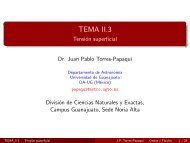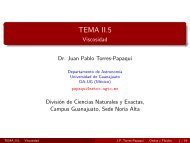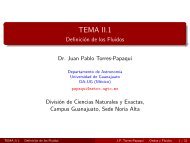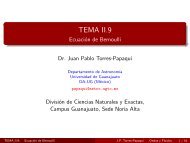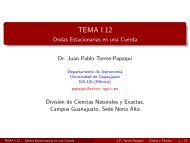MEXART: I. Sensitivity of the array and observable Inter Planetary ...
MEXART: I. Sensitivity of the array and observable Inter Planetary ...
MEXART: I. Sensitivity of the array and observable Inter Planetary ...
Create successful ePaper yourself
Turn your PDF publications into a flip-book with our unique Google optimized e-Paper software.
Figure 1: The block diagram <strong>of</strong> <strong>MEXART</strong> EW <strong>array</strong> <strong>of</strong> dipoles<br />
rms noise, ∆Trms <strong>and</strong> minimum detectable flux density ∆Srms = (2k/Aeff)∆Trms are estimated<br />
(see Table 1)<br />
The coupling between NS elements will influence <strong>the</strong> aperture efficiency. This factor is not<br />
known, so we use a value <strong>of</strong> 0.7 measured using Crab nebula as <strong>the</strong> aperture efficiency. This<br />
value is used for <strong>the</strong> calculation <strong>of</strong> <strong>the</strong> effective area using <strong>the</strong> physical area, for <strong>the</strong> NS <strong>array</strong> <strong>of</strong><br />
rows.<br />
3 Confusion limit<br />
The confusion noise due to faint radio sources within <strong>the</strong> beam depends on <strong>the</strong> beam size <strong>and</strong><br />
<strong>the</strong> frequency. The confusion limit is defined as (Condon 1974),<br />
Sc =<br />
q 3−γ<br />
3 − γ<br />
1<br />
1−γ<br />
(n0Ωb) 1<br />
1−γ , (2)<br />
where γ <strong>and</strong> n0 are defined as, n(s)ds = n0s γ ds. Here n(s) is <strong>the</strong> differential source count. The<br />
effective telescope beam,<br />
Ωb = π θ1θ2<br />
4 (γ − 1)ln(2)<br />
2




